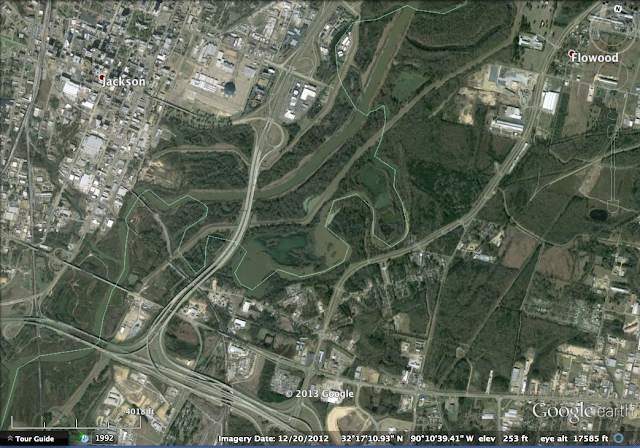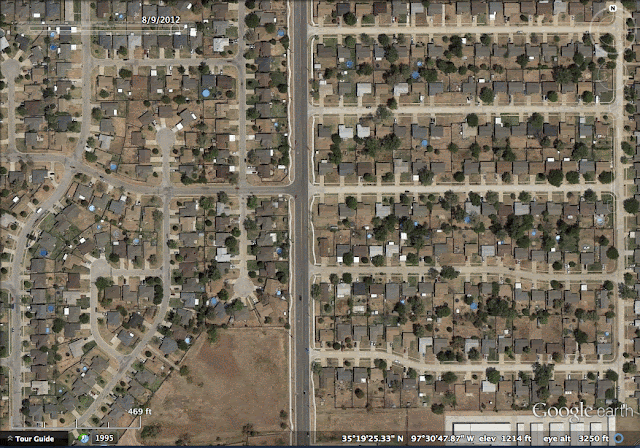If you’ve ever been to an
Outback Steakhouse you’ve probably seen an upside-down map
of the world somewhere near the entrance of the building. Outside of Outback Steakhouse, most maps
you will ever see will have north at the top, south at the bottom, east to the
right, and west to the left. If you pull up any quadrangle
map from the USGS, you’ll find it oriented north. If you open Google Earth, the North Pole will
be at the top of the screen. If a GIS
student turns in a map with West at the top of the page, he probably
fails his assignment. Whether they’re
official or unspoken, the rules dictate that we orient our maps north.
Until recently, if you had
wanted to see a map oriented in any way other than north, you could have rotated it,
but you would have ended up with something that looked like this:
With the map labels oriented north
as well, our minds just see a sideways map and we try to tilt
our heads or adjust the image in our brains.
However, with some digital applications, we can rotate a map to any
direction and see the map labels oriented to that degree. This makes the text readable but the map
itself will look wildly foreign.
Texas oriented to the south:
Instead of wearing Oklahoma like a hat, Texas now sits on Oklahoma and
uses New Mexico as a footrest while reclining on Louisiana.
Italy oriented to the south:
How eccentric does Italy seem?
Traverse City oriented to the
south:
I love how all you have to do is turn Michigan upside down to render the
names “Upper Peninsula” and “Lower Peninsula” useless.
Sea of Japan oriented to the
south:
It’s pretty weird to see the word ”South” above the word “North” on the Korean Peninsula. I'm sure this particular orientation is banned by Dear Leader.
Southern Florida oriented to
the south:
If you use your imagination, you can pretend Cuba here is actually the edge of a large continent.
Lake Erie oriented to the
west:
You could sail down the lake from Detroit to Buffalo.
Boston oriented to the east:
Cape Cod towers over all.
UAE oriented to the
east:

The coast here kind of looks like Western France.
Scandinavia oriented to the
southwest:
It’s so askew!
In full disclosure, this is actually Apple Maps and not Google Earth.












































